2020 Ford Ranger 2.2TD 4×4
| The Good: – Surprisingly comfortable – Cabin space and features – Economical, basic offroader |
The Bad: – Lots of hard plastics obviously – Terribly slow at times – Blue-collar image may bother you |
We drove the Ford Ranger WildTrak back in 2016 when it got a minor redesign. It was the “lifestyle” version of a work-truck, with attractive visual modifications and a juicy 3.2-litre turbodiesel engine. It gained a niche following among people who rightly desired a pickup truck that wasn’t too big to fit in the average parking space, unlike the typical F-150. Four years later we finally drove the semi-commercial version, an appliance-white four-door Ranger XLS 4×4 with optional XLT bits and a 2.2-litre turbodiesel. And it was a far more enlightening test-drive than the Wildtrak. And a rather endearing family vehicle.
The Ranger got a minor facelift with a new front bumper and other bits sometime during 2019. It has a more purposeful ready-for-work look than the Wildtrak, with bed hooks and no overdone elements, but we call it semi-commercial because it has a fancy metal roll bar with built-in LED bed lamps, 16-inch alloy wheels, body-coloured bumpers, side steps and a chrome grille as well as door handles, aside from a long list of convenience tech.
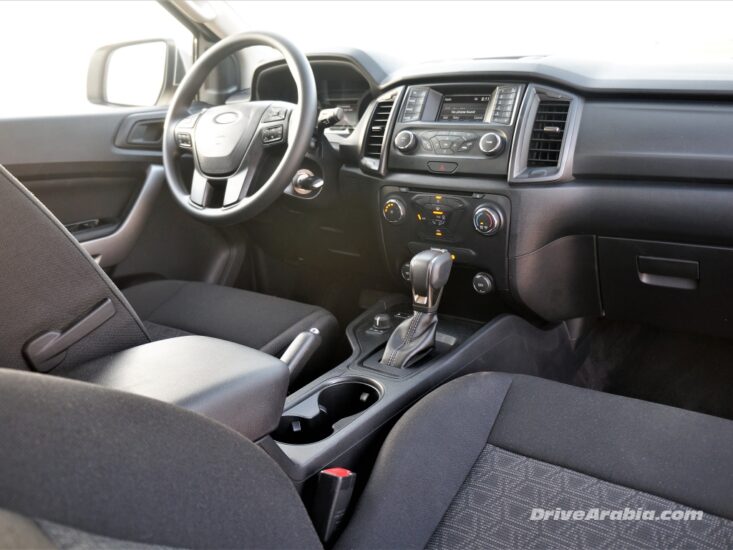
The mid-range Ranger XLS dispenses with pleasantries such as a stitched leatherette dash or any other sort of trim other than hard plastic, but the door armrests and inserts are nicely padded. The centre-console houses a little multimedia touchscreen displaying as simple user interface, with buttons below it as well as steering-wheel buttons to control radio settings, Bluetooth and such. The gauge cluster comprises of physical gauges with an info screen in the middle. The mildly-bolstered seats are of hard-wearing cloth, but perfectly comfortable. It feels reassuringly car-like in terms of design when sitting behind the wheel.
It also comes with an array of basic tech and features, such as a fairly strong a/c (with no rear vents), auto headlights (halogen), 6-speaker stereo with USB port, power mirrors and windows, front and side airbags, basic keyless entry with flip key and so on. Cruise control, ESP, ABS and front/side airbags were also present.
The Ranger has generous amounts of space both in the front and rear, with good legroom and headroom. The rear seats comes with a centre pull-down armrest, have proper headrests and are less upright than most other pickups in its class, although still no match for the seating comfort that’s typical of more commuter-oriented vehicles. The steering column is adjustable up and down only.
There are enough cup holders for the front and rear passengers, bottle holders in the front doors and several other storage areas, including a two-level centre armrest console. There is a big emergency toolkit bag (with fire-extinguisher, etc.) with no appropriate place to store it, so we just left it in the rear passenger footwell. The large cargo bed in our test vehicle had a spray-in bedliner, and is capable of hauling payloads over a ton (with a towing capacity of about three-and-a-half tons). The tailgate-opening action is not damped, but an “easy-lift” tailgate is available on higher trim levels.

Powered by a 2.2-litre 4-cylinder turbodiesel motor making 158 hp at 3200 rpm and 385 Nm of torque at 1600-3500 rpm, our XLS tester is mated to a smooth-shifting 6-speed tiptronic transmission, it does the 0-100 kph in a blistering 13 seconds. This apparent lack of power was initially disconcerting, but it’s easy enough to work around it.
There is decent initial torque so city-driving is perfectly fine. At highway speeds, the motor settles down at 2000 rpm and cruises rather effortlessly so we had no issues on the fast lane. Even overtaking from 100 to 120 kph is no worse than a typical economy car. The main issue is in the mid-range, when attempting to accelerate in the 60 to 100 kph range. It feels absolutely dead at full throttle, so we had to time our overtaking moves to leave enough of a gap from approaching cars.
The automatic gearbox behaved itself better than in the Wildtrak, easily picking the right gears to move the less-powerful engine along. There is a tiptronic manual mode as well.
Fuel consumption is very impressive, burning diesel at a rate of 10 litres/100 km (10 km/litre), including a mild jaunt in the desert. Somehow it was no better than the more-powerful Wildtrak we tested earlier, but we did keep the little engine on the boil as we drove it around like a fast cruiser rather than moving over to the slower lanes.
Interestingly enough, we found the Ranger XLS to ride smoother than the Ranger WildTrak as well. Both have heavy-duty leaf-sprung live-axle rear suspension. We found the 2016 Wildtrak to be overly harsh (yet still better than any Toyota Hilux), but the post-facelift 2020 XLS is far smoother, with a mildly bumpy ride that’s well-damped on most surfaces and comfortable enough on the highway. We’ll put it down to either suspension updates or less-aggressive tyres.
Even more surprisingly, the Ranger XLS can be described as a relatively quiet vehicle, again far better than the 2016 Wildtrak. The diesel-engine rattle isn’t very loud, while the road noise and wind hush are moderate at most. Combined with the smoother suspension, the XLS is actually an excellent long-distance daily driver.
The Ranger XLS handles in a safe and predictable way. Although the suspension feels a bit lumpy, body roll was limited and grip from the 255/70 tyres was far better than we expected for a pickup. The ESP system works invisibly to smoothly rein in overzealous cornering. The electric-assisted power steering has a good turning radius and light enough to manoeuvre like a car, but lacks feedback. The brakes (front discs and rear drums) were adequate, but behaved oddly, with its non-linear pedal feel requiring you to press harder near the end of a stop.
Visibility is generally good all around, and there is a reverse camera whose view (with guiding lines) appears in that little dashboard screen, aside from rear parking sensors.
Boasting a part-time 4×4 system, the Ford Ranger is capable of offroading, and comes with a knob-operated transfer-case with three modes -– 2 High, 4 High and 4 Low. There is no all-wheel-drive mode, and the truck has to be driven in rear-wheel-drive mode at all times on the tarmac. Oddly enough, our truck did come with a rear differential lock, hill start assist and hill descent control, all of which were optional (and missing) on our old Wildtrak tester.
The WildTrak is a great off-roader that never broke a sweat on the dunes, but the Ranger XLS is hindered by its more humble powertrain. It can definitely manage soft sand, even without needing to deflate the tyres, but you have to stay on the power to avoid bogging down. Climbing more aggressive slopes may be an issue due to the lack of juice, but it’s infinitely better than any crossover if you like venturing out into the wilderness like we did for a family picnic.
And that’s the funny bit — it’s a rather excellent family car. While we had trouble with luggage capacity (because we couldn’t use the open-air cargo bed to carry sandwiches), slapping on a bed cover would make this work truck an amazingly versatile vehicle. We didn’t even get honked at on the highway, so it has acceptable road respect on our region’s fickle streets as long as you wring that motor for all it’s got and keep up with traffic. And the kids loved it, if only because they could jump around in the bed like their personal trampoline (parked, of course). With its go-anywhere capabilities, terrific fuel-efficiency, car-like cabin features and decent comfort, this is the first midsize pickup we could actually live with.
| Price Range: Dh 122,700-123,000 Current Model Introduced in: Body Styles: Engines: Transmissions: Setup: Suspension: |
Brakes: Front: discs Rear: drum Curb Weight: Length: Wheelbase: Top Speed: Test Acceleration 0-100 kph: Observed Test Fuel Economy: |
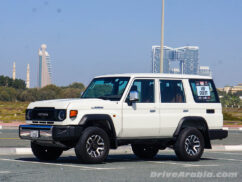
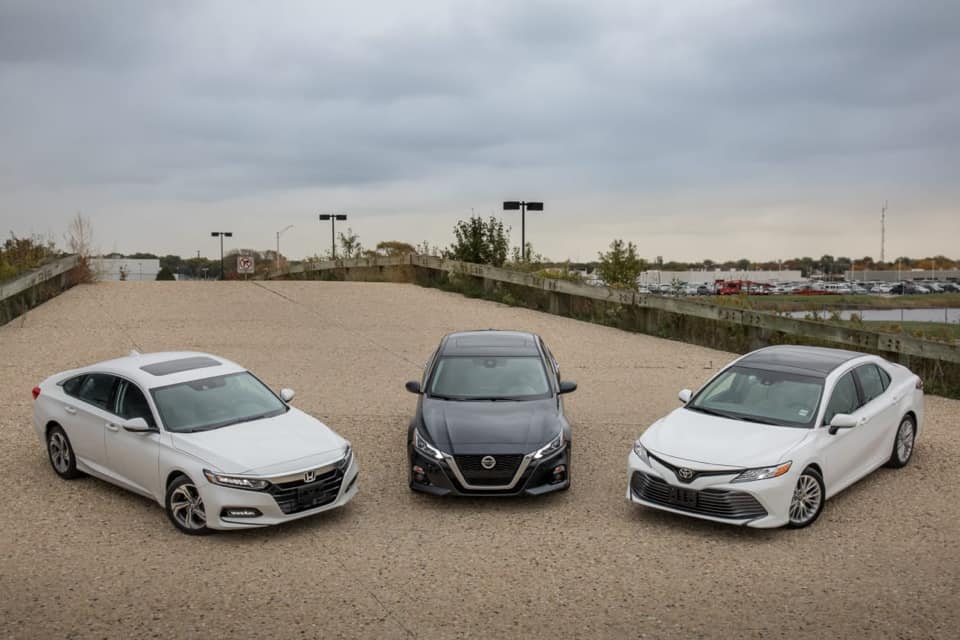
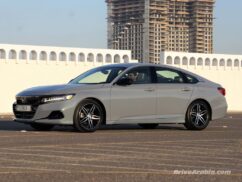
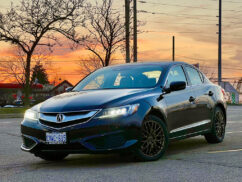
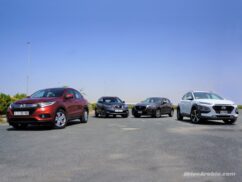
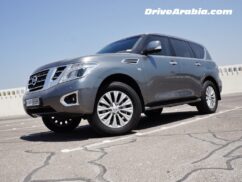
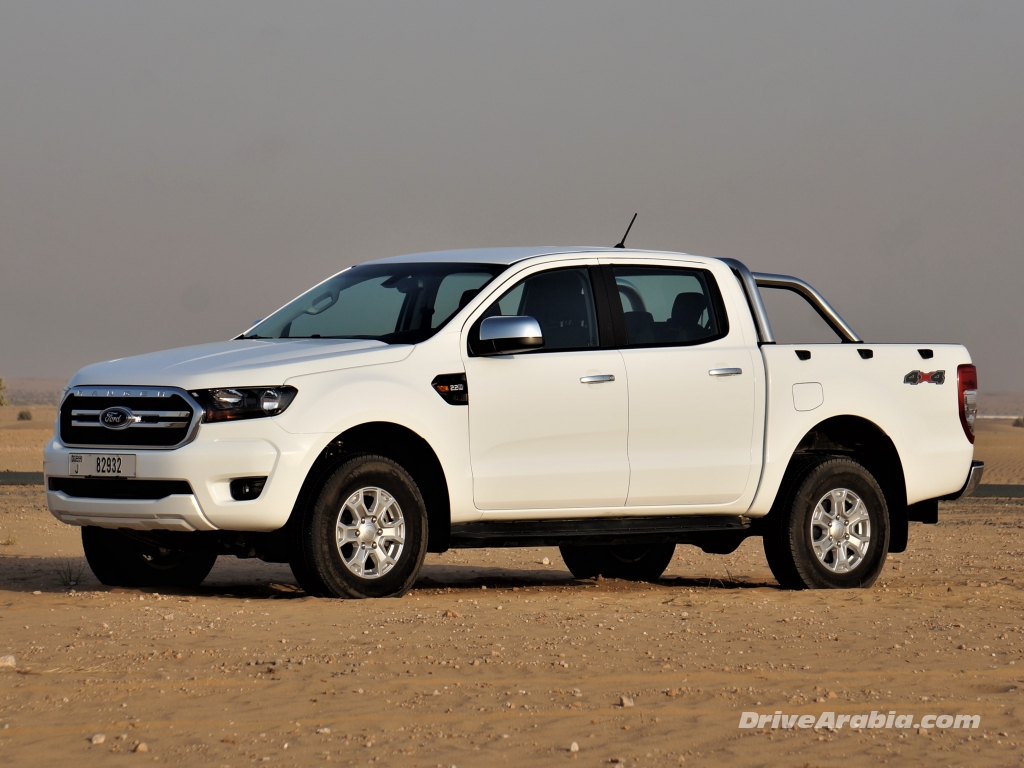
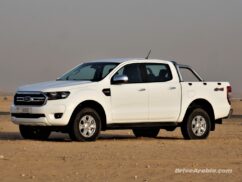
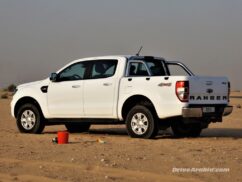
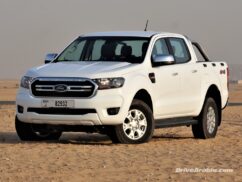
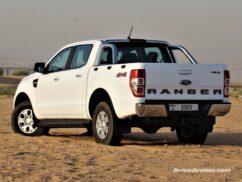
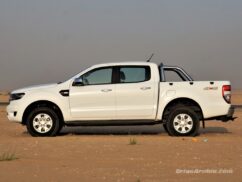


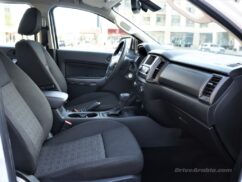

There are no comments. Be the first!